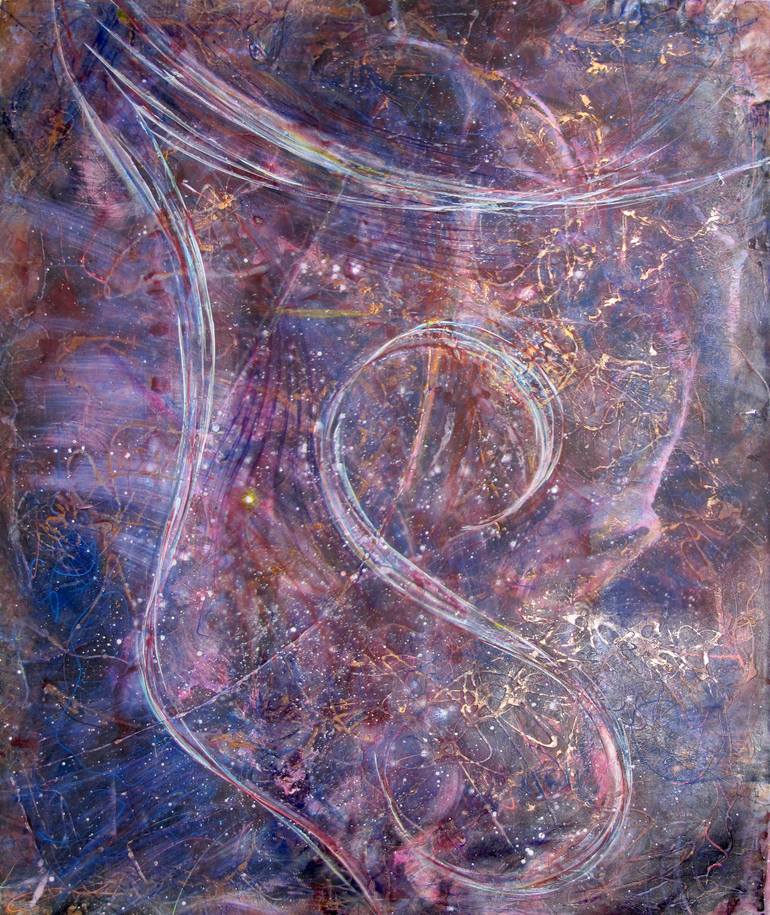







VIEW IN MY ROOM
Burning Space, Abstract Landscape Painting
Canada
Painting, Acrylic on Canvas
Size: 47.2 W x 59.1 H x 0 D in
Ships in a Tube
Shipping included
14-day satisfaction guarantee
Artist Recognition

Artist featured in a collection
About The Artwork
Because of the absence of gravity, fuels burning in space behave very differently than they do on Earth May 12, 2000 -- The forms of flames on Earth are familiar to everyone. We all know what a burning match, candle, fireplace or blowtorch look like -- or a burning building, or rocket ignition blast. The presence of gravity and the effects of air or gas movement, plus the type of fuel and oxidant, determine everything from a flame's shape and temperature to burn rate, burn pattern, soot production and deposition and how fast it will or won't be extinguished. "But in the microgravity of space, we are not dealing with just another old familiar flame," says Dr. Vedha Nayagam of NASA's National Center for Microgravity Research on Fluids and Combustion at the Glenn Research Center (GRC) in Cleveland, OH, where the nature of combustion in space is being studied intently by teams of scientists. Above: On Earth, gravity-driven buoyant convection causes a candle flame to be teardrop-shaped and carries soot to the flame's tip, making it yellow. In microgravity, where convective flows are absent, the flame is spherical, soot-free, and blue
Details & Dimensions
Painting:Acrylic on Canvas
Original:One-of-a-kind Artwork
Size:47.2 W x 59.1 H x 0 D in
Frame:Not Framed
Ready to Hang:Not applicable
Packaging:Ships Rolled in a Tube
Shipping & Returns
Delivery Time:Typically 5-7 business days for domestic shipments, 10-14 business days for international shipments.
Handling:Ships rolled in a tube. Artists are responsible for packaging and adhering to Saatchi Art’s packaging guidelines.
Ships From:Finland.
Have additional questions?
Please visit our help section or contact us.
Canada
I’m Canadian abstractionist, an artist synesthetes*, Abstract Expressionist. Emotions are very important to me. When you are in art all your life is at this particular moment. It’s like improvisation in music. You need explain all life in one moment, in one phrase, in one white square… Emotion is a relationship with other people. My art is a relationship with others too. I like challenge, I like to make something new every day, on the end I like to win. And more important I like to win Every day. For me to finish my canvas is like red line for the runner or reaching the peak of a mountain for a climber, I will die for this. I love colours, I love paint, and I love canvas, white canvas. I like even prepare canvas for painting, I just love to be an artist. When I’m painting I feel like a runner, marathon 42 km. runner dying for red line, dying to reach the finish line. I feel like the climber whose single goal driving him all the time is to reach the peak of the mountain. I want to succeed. I love to win. I feel myself so liberated when create art. First, because I can produce something that is influence on human’s mood or state of mind, and second, because I can escape this reality. And I like this feeling. My paintings have been sold for years to offices, shops and private residences in Canada, Australia, USA, Europe etc. Up until now in 18 countries. I am continuously developing my style of painting, keeping it interesting for you to come back for another visit. Don’t hesitate to contact me, I will be happy to answer all your questions. Thank you for your interest hope you like it! synesthetes* - Synesthesia in art has referred to a wide variety of Atits experiments that have explored the co-operation of the senses e.g. seeing and hearing; the word synesthesia is from the Ancient Greek, "together," and Aisthēsis, "sensation". In the genres of visual music, abstract film, abstract film, music visualization, audiovisual art and intermedia.
Artist Recognition

Artist featured by Saatchi Art in a collection
Thousands Of Five-Star Reviews
We deliver world-class customer service to all of our art buyers.
Global Selection
Explore an unparalleled artwork selection by artists from around the world.
Satisfaction Guaranteed
Our 14-day satisfaction guarantee allows you to buy with confidence.
Support An Artist With Every Purchase
We pay our artists more on every sale than other galleries.
Need More Help?